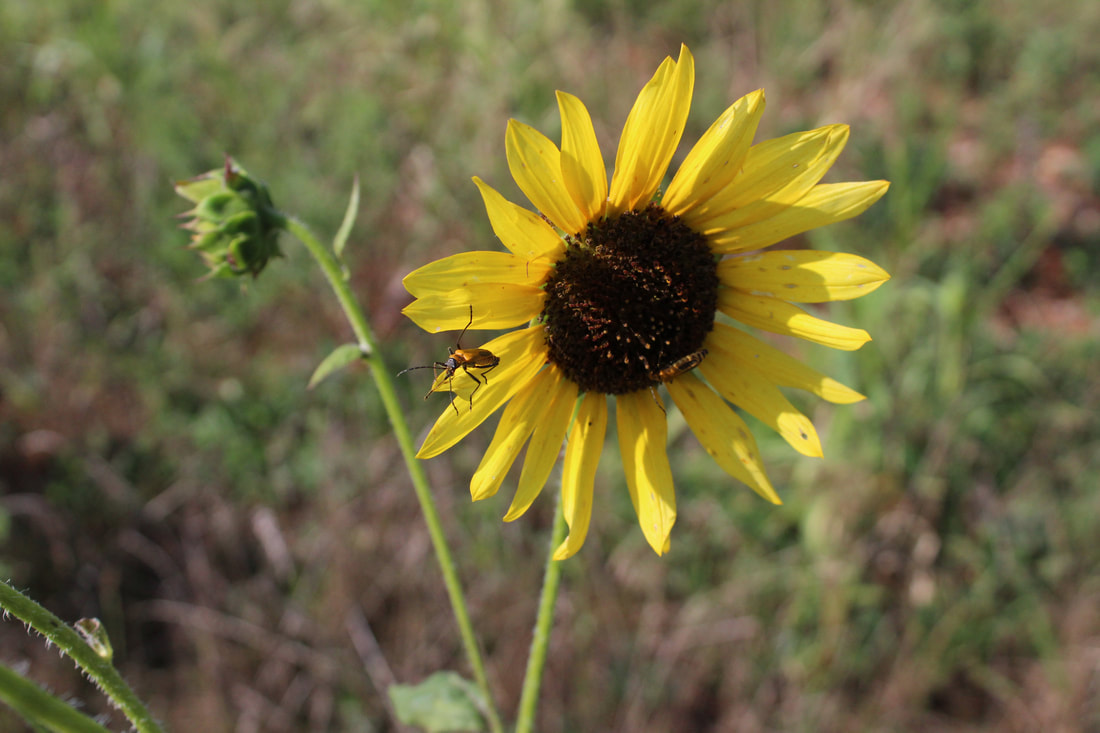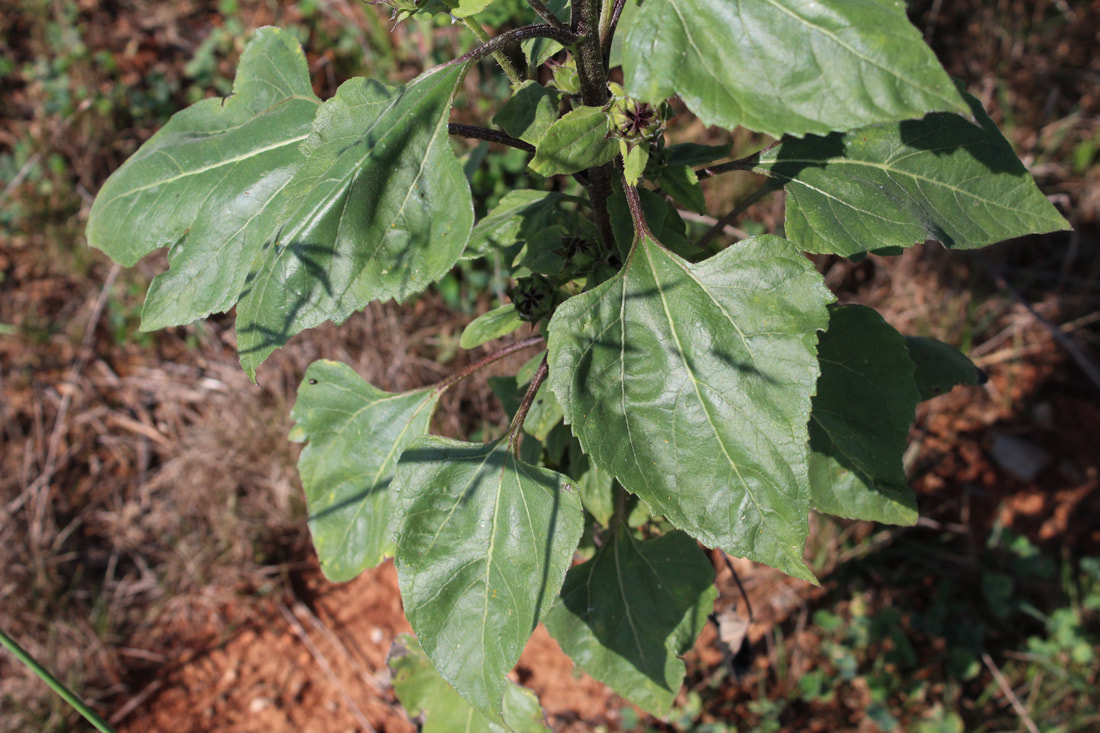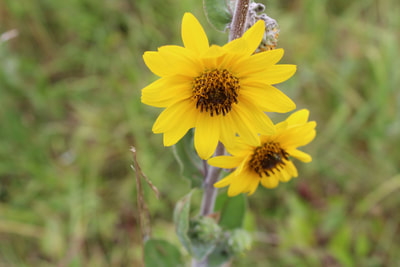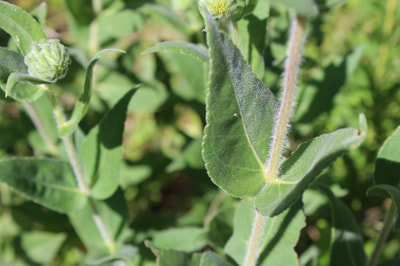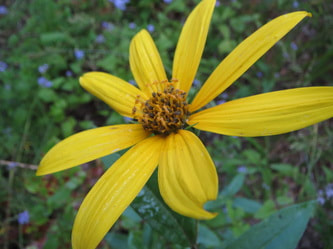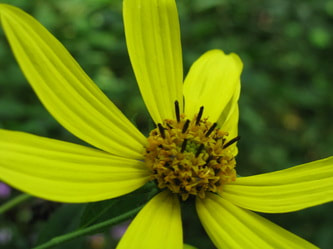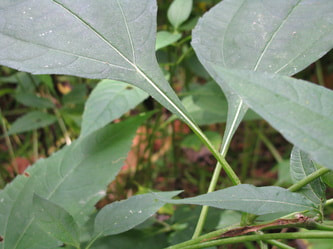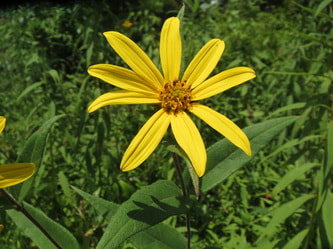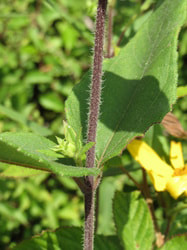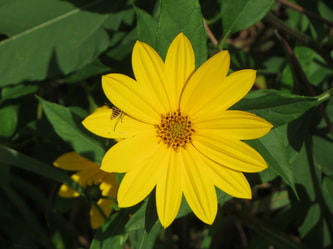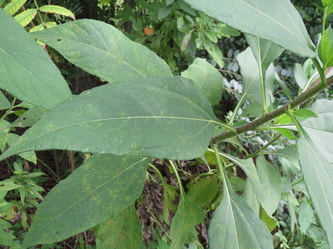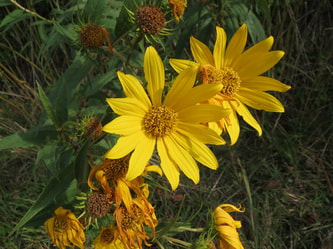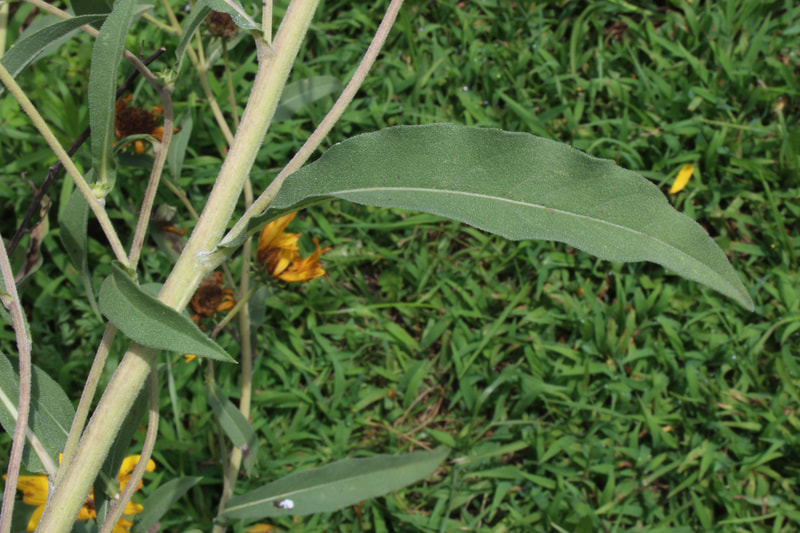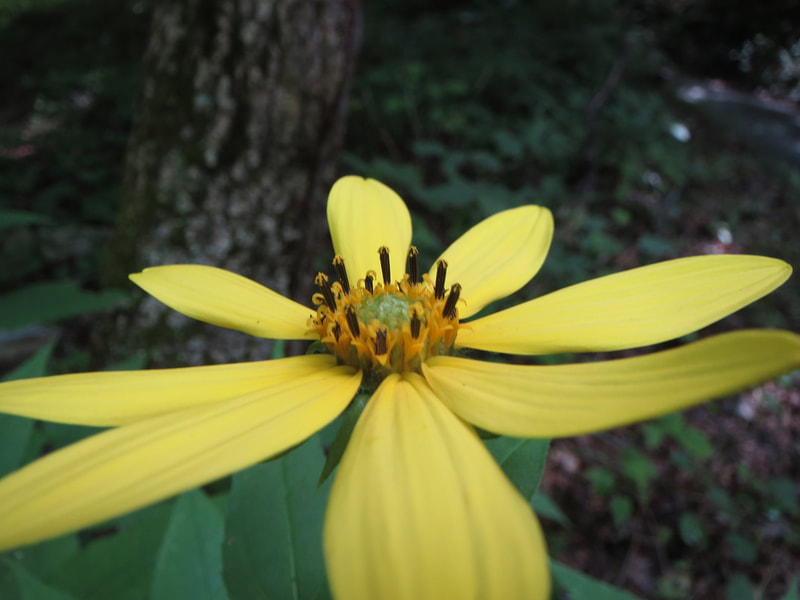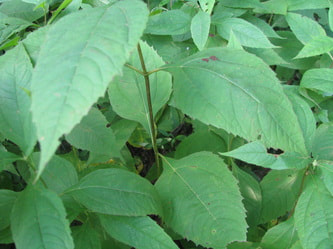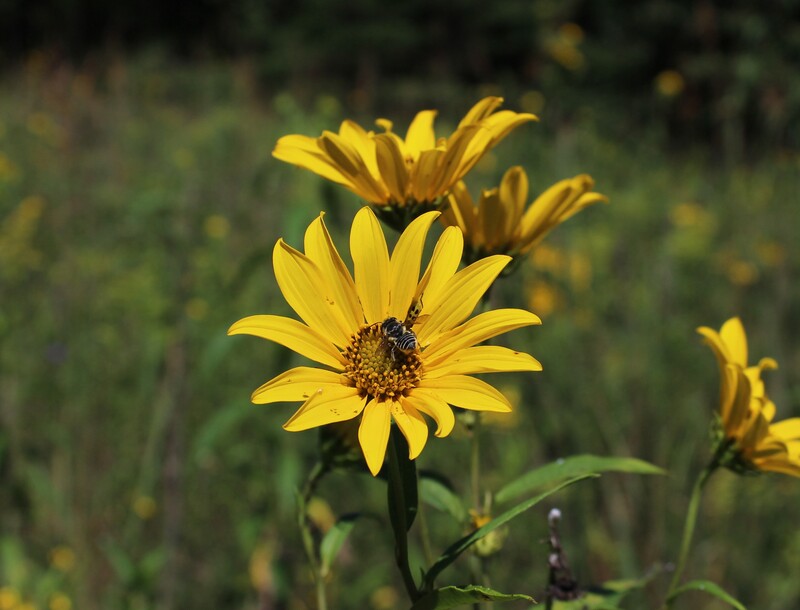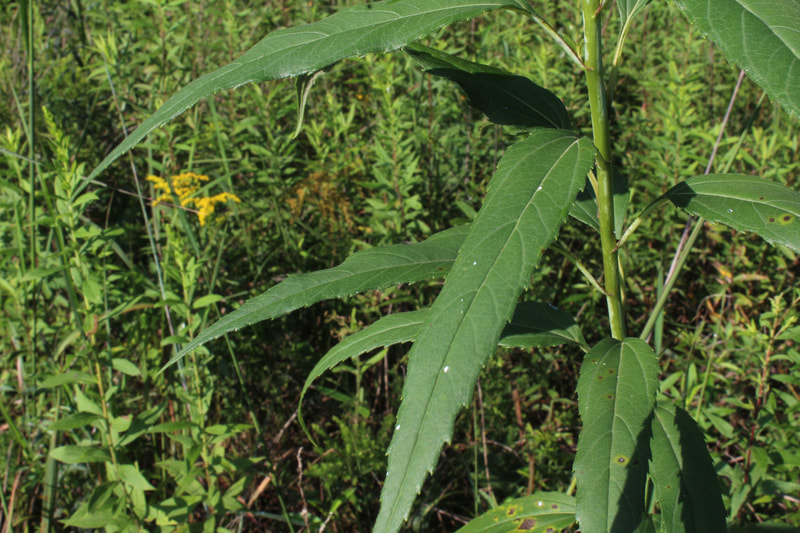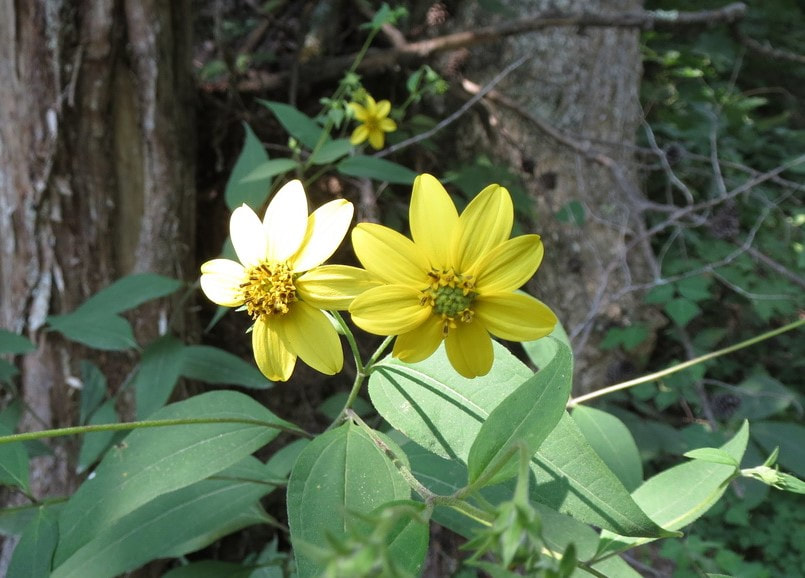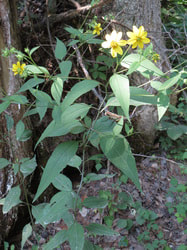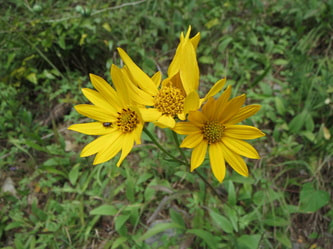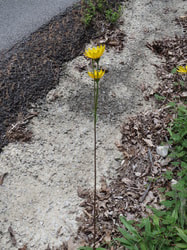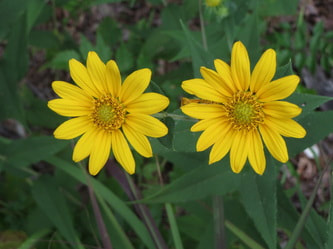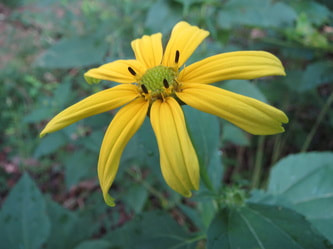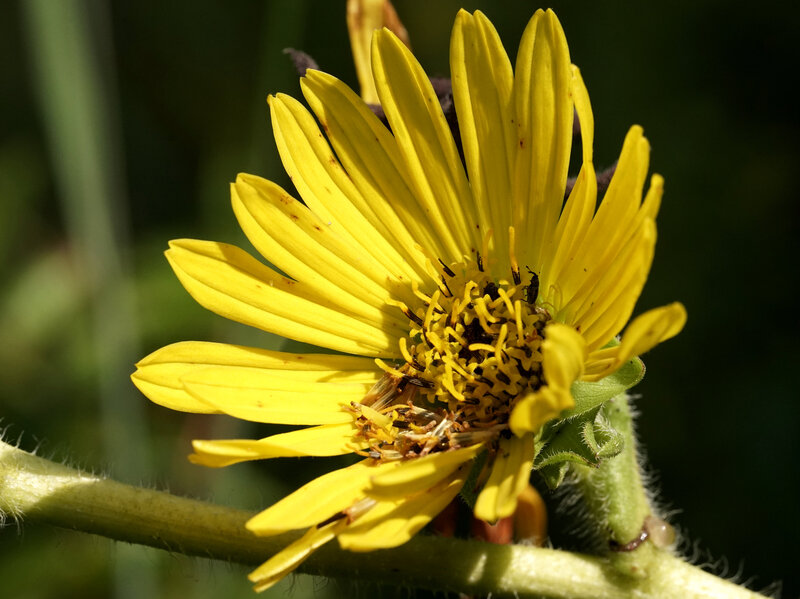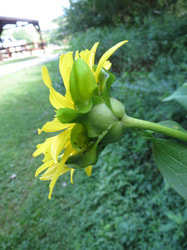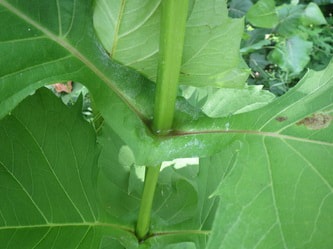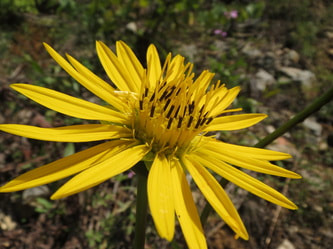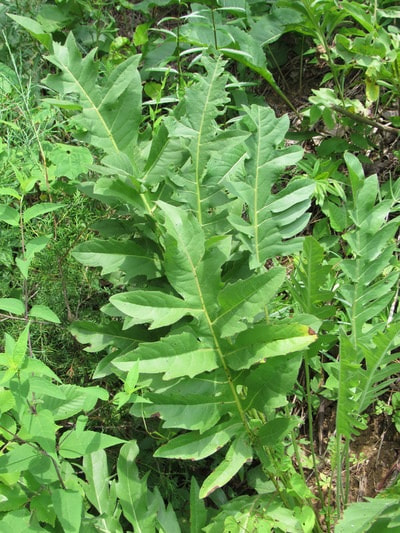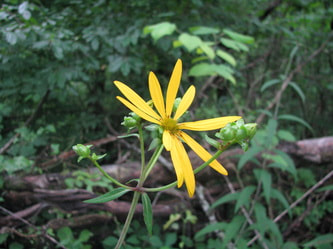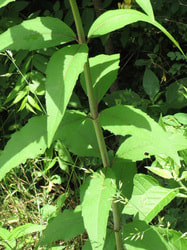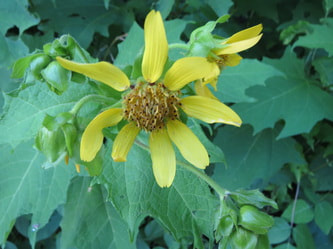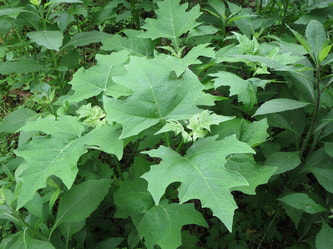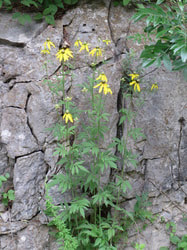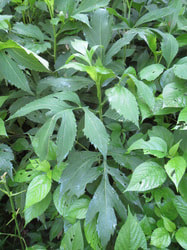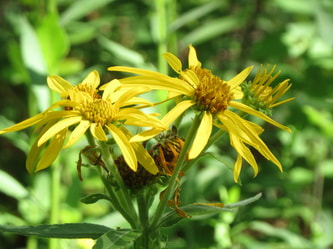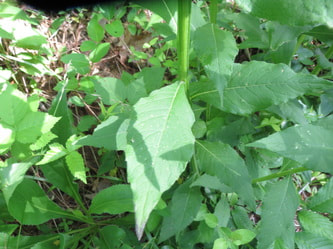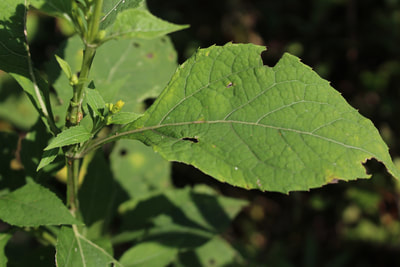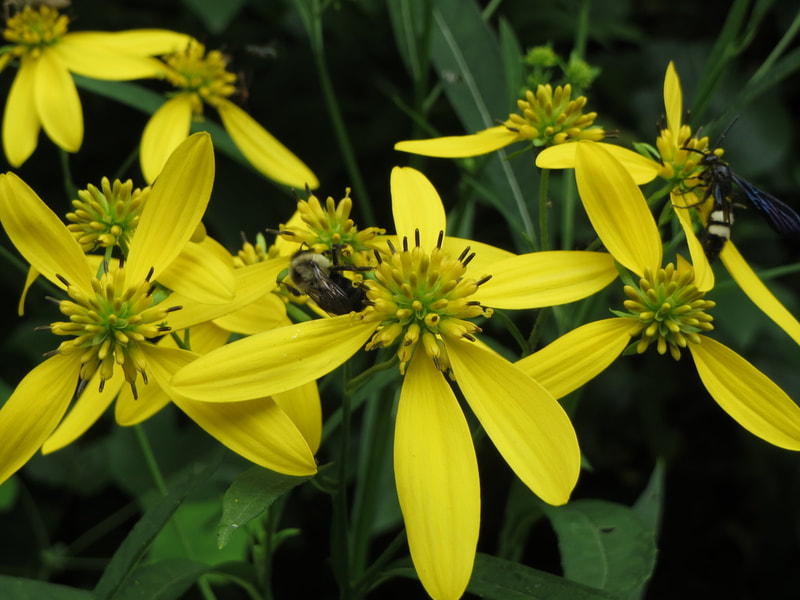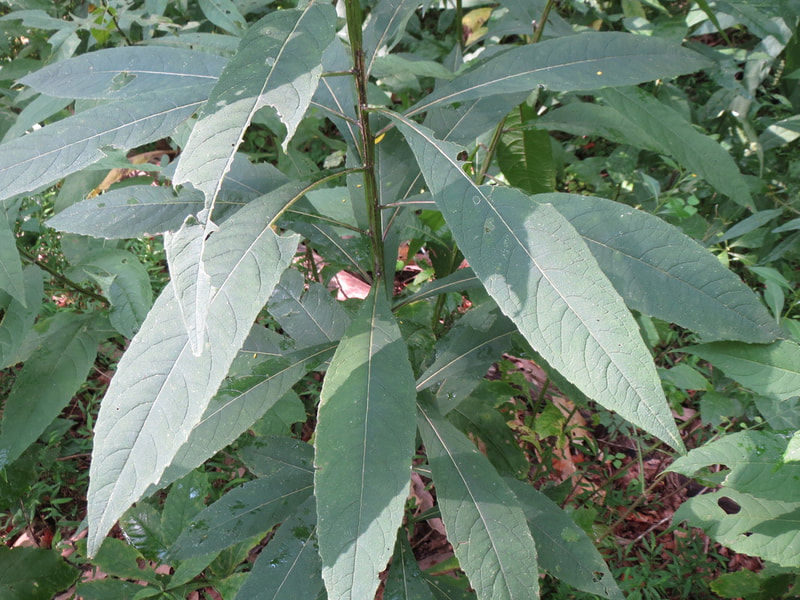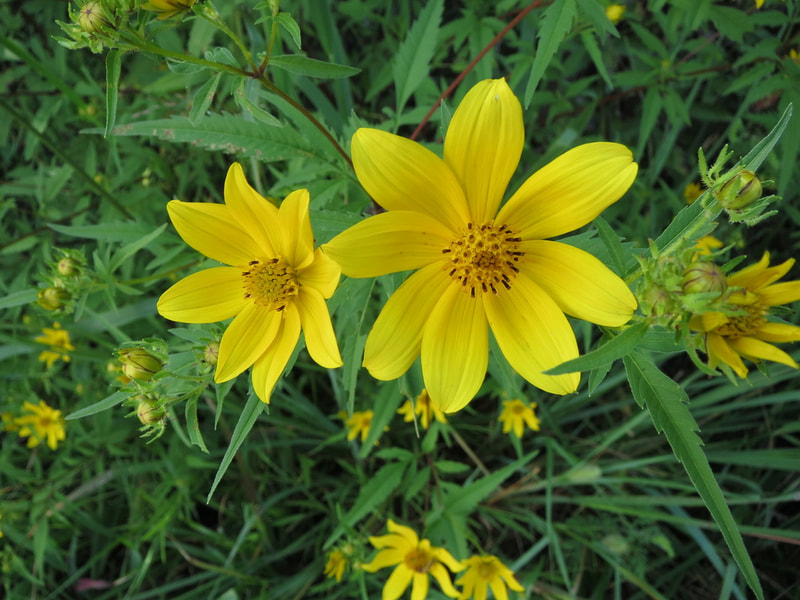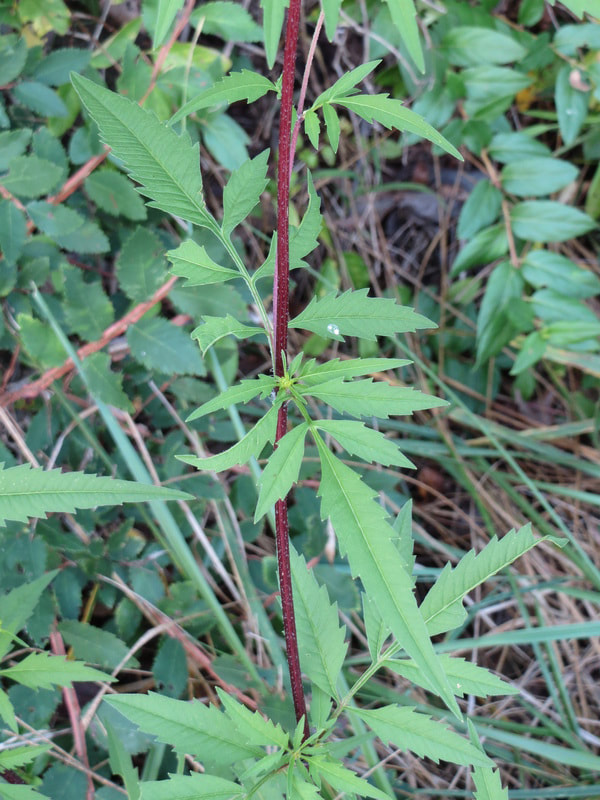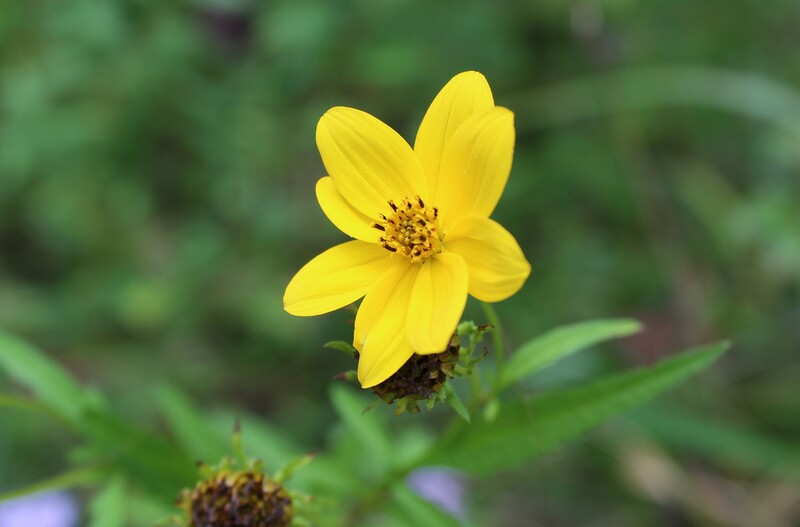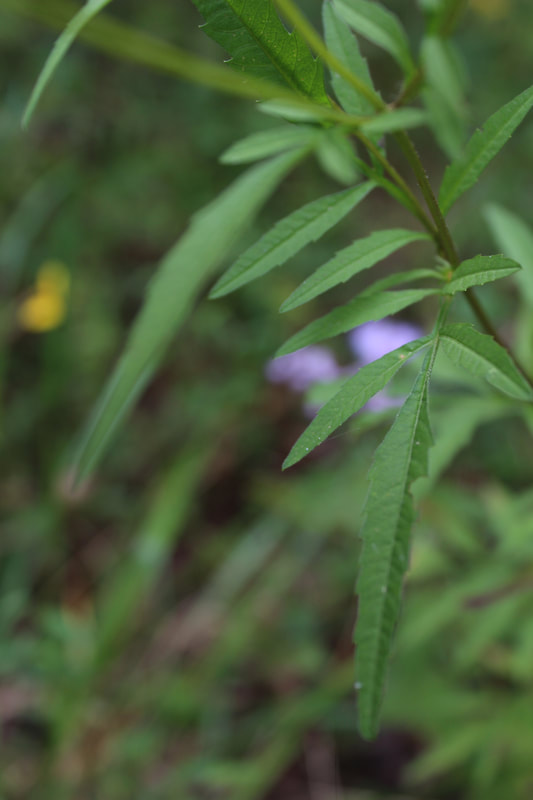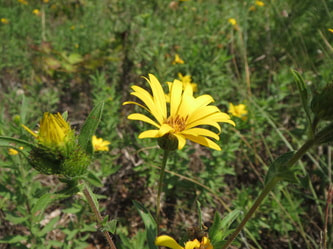A guide to area sunflowers and similar yellow flowers in the Asteraceae
For a printable Word document of this page, click here.
Almost all of the species listed below have more than one common name. Latin names are the only way to reliably differentiate them. Phyllaries are the green bracts directly beneath the yellow flower heads.
Real sunflowers are in the genus Helianthus.
|
|
Eggert's sunflower - Helianthus eggertii
|
Forest sunflower - Helianthus decapetalus
|
Hairy sunflower - Helianthus hirsutus
|
|
|
Rough-leaved sunflower - Helianthus strumosus
|
Sawtooth sunflower- Helianthus grosseratus
|
Small-headed sunflower - Helianthus microcephalus
|
Western sunflower - Helianthus occidentalis
|
Woodland sunflower - Helianthus divaricatus
|
Ox-eye (or false) sunflower, genus Heliopsis, differs from all species in the genus Helianthus by its fertile rays. Each ray petal has a small, forked style at its base.
|
Members of the genus Silphium all have stiff recurved sepals (green petals) beneath the yellow flower head.
|
Compass plant - Silphium laciniatum an uncommon prairie species, rare in our area. stem leaves are deeply lobed. |
|
|
Whorled rosinweed - Silphium trifoliatum
|
Other yellow summer flowers in the Asteraceae.
|
Gray-headed coneflower - Ratibida pinnata
|
|
|
Crownbeard (fall) - Verbesina occidentalis
|
Yellow wingstem - Verbesina alternifolia
|
|
|
Prairie golden-aster - Heterotheca camporum
|
